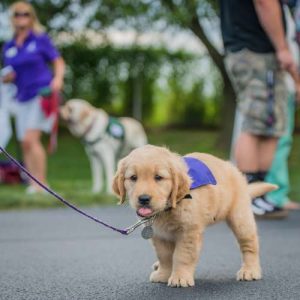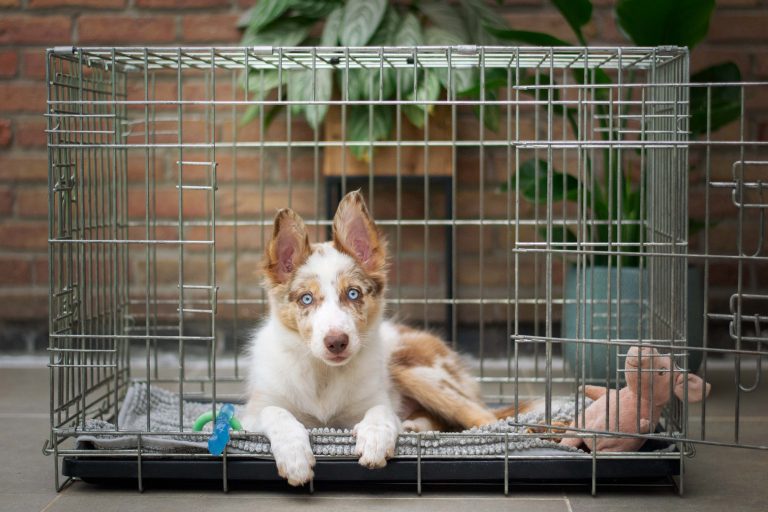Dog Training: 5 Amazing Facts You Need To Know
Dog training is an essential part of owning a pet, and it’s important to understand the basics for your pup to have a happy life. Dog training helps build a strong bond between you and your dog while teaching them important life skills that can help reduce behavioral problems, improve their socialization skills, and promote obedience. Having a well-trained dog will make taking them out in public much easier as they won’t be running around or barking uncontrollably.
Although there are many challenges associated with dog training, taking proactive steps to ensure success will maximize results and make sure both you and your pooch are having the best experience possible. In this article, we’ll discuss some key tips on how to successfully implement dog training into your daily routine.
 Dog Training Essentials: What You Need to Know
Dog Training Essentials: What You Need to Know
- Challenges Associated with Dog Training
- Establishing a Consistent Routine and Setting Clear Expectations
- Choosing the Right Dog Trainer and Training Method
- Understanding Your Dogs Body Language and Communication Cues
- How to Handle Unwanted Behaviors or Setbacks in Dog Training
Challenges Associated with Dog Training
Dog training is not without its challenges. Training a dog takes time and requires patience as well as perseverance. From understanding your pup’s body language to dealing with unwanted behaviors, there can be a lot of obstacles along the way. It is important to have realistic expectations and understand that it may take some time before you achieve the desired results.
Additionally, it can be difficult to find the right trainer with experience in the specific techniques you want to use for your dog as well as having reliable resources available when needed. Finally, every dog learns differently so finding which method works best for yours may require trial and error before any progress is made. Understanding these potential challenges will help ensure both you and your pup have a positive experience overall.

Establishing a Consistent Routine and Setting Clear Expectations
One of the most important aspects of successful dog training is creating a consistent routine. Dogs thrive on structure, so having a regular schedule for meals, playtime, exercise, and training time will help keep your pup focused and willing to learn. Establishing clear expectations for behavior is also key. This means setting boundaries with specific commands for acceptable behaviors as well as expectations for rewards when those behaviors are properly executed. Clear expectations will help you communicate more effectively with your pup and ensure they understand the rules of their environment.
Having consistency in your routine should not only be implemented at home but out in public as well. When taking your dog to parks or other areas with other dogs, make sure they know what is expected of them and that they remain respectful of the other dogs’ space. This will help promote proper socialization skills while reinforcing positive behaviors like appropriate interaction with other pups. Additionally, having an understanding of dog body language can be extremely helpful in anticipating actions before they occur while out in public.
Consistency is key when it comes to successful dog training! Having a clear routine, setting up realistic yet challenging goals, and sticking to them will give your pup the best opportunity to learn quickly and correctly. Dog love structure, so implementing a daily schedule that includes designated times for playtime, meals, exercise, and training will keep both you and your pup happy!

Choosing the Right Dog Trainer and Training Method
Finding the right dog trainer and training method is essential for successful dog training. Dog trainers have varying levels of experience, so it is important to find one who is a good fit for you and your pup. Researching potential trainers and asking lots of questions can help you make the right decision. Additionally, reading reviews, watching the company’s training videos or referrals from reliable sources can also be beneficial when deciding on the best option for your pup’s training needs.
There are various types of dog training methods available and it is important to understand that each method has its pros and cons, so evaluating what would work best for your pup will be key to finding success with any particular approach. Ultimately, choosing a method that fits both your and your pup’s learning style will be essential to achieving desired results in a timely manner.
Finally, if you decide to choose a dog trainer, it is important to make sure they have proper qualifications as well as insurance coverage in case of an accident while on the job. In many cases, hiring a professional dog trainer may seem like an expensive investment, but it is much cheaper than a vet bill or repairs due to damage caused by the dog. Dog trainers provide not only expertise but also valuable resources which can help improve effectiveness during training sessions.
Understanding Your Dogs Body Language and Communication Cues
When it comes to successful dog training, understanding your pup’s body language and communication cues is essential for getting the desired results. Dogs often communicate through body language and vocalizations, so being able to recognize these signs can be helpful in understanding how they are feeling or what they are trying to convey.
A relaxed dog will often have an open mouth with their ears forward and eyes that are soft showing no signs of aggression. They may also have a wagging tail and will generally appear content and happy. Alternatively, when a dog feels threatened or nervous they may display any number of behaviors such as cowering away from people or other animals, growling or barking, lip licking/smacking, raising their hackles (the hair on the back of the neck) or even curling up into a tight ball. It is important to remember that dogs use many different signals to communicate so recognizing these subtle changes can be extremely helpful in understanding what your pup is trying to tell you.
In addition to body language cues, dogs also use vocalizations such as barking or whining to express themselves. Barking can mean anything from “I’m excited” to “I feel threatened” so it’s important to be able to distinguish between different types of barks. When your pup whines it could mean anything from “I want something” to “I’m stressed/fearful” depending on the context so being aware of this difference is key in determining why your pup might be feeling this way.
Understanding your dog’s body language and communication cues can be an invaluable tool in successfully training your pup while building a strong bond between you both. As long as you maintain consistency with clear expectations while paying close attention to subtle changes in behavior or vocalization patterns you should have no trouble helping your pup learn quickly and correctly!

How to Handle Unwanted Behaviors or Setbacks in Dog Training
When it comes to dog training, there are bound to be some unwanted behaviors and setbacks along the way. It is important to be aware of potential issues and take proactive steps to handle them to keep your pup on a successful learning path.
One of the most common issues that can arise during dog training is when your pup does not understand what you are trying to teach them. If this happens, it is important to break down the instruction into simpler steps and be patient with your pup as they learn. Additionally, using reinforcement techniques such as praise when they have done something correctly can help motivate them to keep trying until they understand.
Dealing with distractions such as other dogs, loud noises, or unfamiliar people during training sessions can also be problematic for some pups. For your pup to successfully learn the desired behavior the environment around them needs to remain relatively distraction-free until they have understood what is being taught to them. Once they have been trained properly then more challenging environments can be introduced gradually for them to practice in real-life scenarios. Increasing distractions during training helps dogs learn to remain calm in different settings.
Patience and consistent reinforcement will go a long way when handling any unwanted behaviors or setbacks during dog training. If you are committed to teaching your pup the desired behaviors then eventually these issues should become less frequent until eventually resolved altogether!

Final Thoughts
Dog training is not only an important part of your pup’s life, but it can also be a rewarding experience for both you and your pet. It takes time, patience, and consistency to ensure success during the process. Understanding the value of proper dog training and its benefits will set both you and your dog up for a lifetime of success. Additionally, being aware of potential challenges that may arise along the way and having proactive steps ready for handling any unwanted behaviors or setbacks will help keep your pup on track with their learning progress. Dog training may seem like a daunting task at first but if done correctly it can bring many benefits into your life as well as yours!
Off Leash K9 Training Eastern Iowa has certified professional trainers who are animal lovers and want to help you. To see the positive impact our training has made in the lives of dogs and owners, check out our YouTube Channel. Our most popular program is the 2-Week Board and Train, but we also offer puppy training and lessons. Text or call us to book your dog in today: (319) 251-2009.






